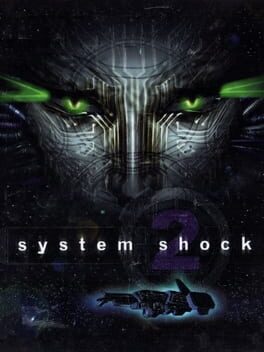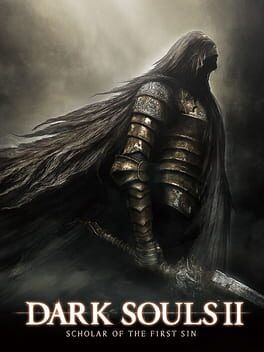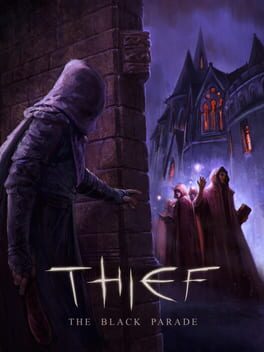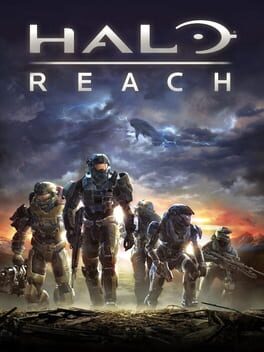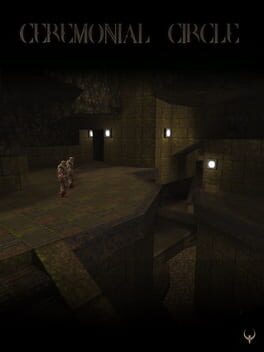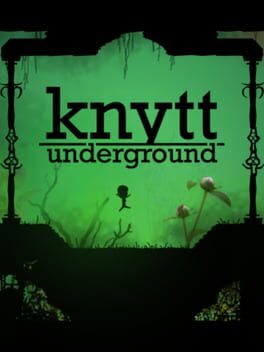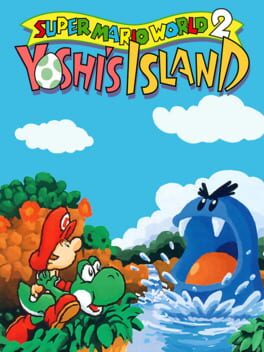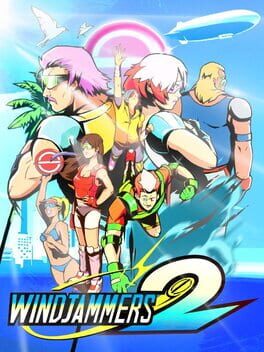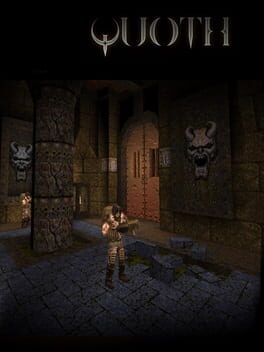1999
In designing System Shock and Thief: The Dark Project, Looking Glass Studios aimed to achieve a "role-playing" experience that was quite different from videogames that drew their mechanics directly from tabletop RPGs. A key insight was that much of the arithmetic that in a tabletop environment might burden players and DMs alike could, in a digital environment, be handled more or less exclusively by the computer. A certain minimum of numerical awareness on the player's part is still necessary (health, ammo, etc), but there is simply no need for the usual RPG rube goldberg machine of having to do things to cause some numbers to go up to get some other numbers to go up in order to get the numbers you actually want to go up to go up.... Far more elegant approaches to player progression are now possible, and what Looking Glass achieved with System Shock—progression based on collecting equipment and suit upgrades—converges onto territory analogous to what Jeremy Parish charts in the transition from the console action-RPG to the metroidvania.
True, SS2's leveling system (by another name) is not exactly the sadly familiar contraption described above, but there is still a diegetically nonsensical experience currency that muddies the intuition driving the equipment-based elegance of SS1. True, grinding is not possible, but like all RPGs even with grinding, the whole system progressively locks the player out of options as the game advances, which by a sleight of hand is disguised as "choice." It is expressive enough that I may choose which weapons to fill my limited inventory space with, attending to the limitations imposed by the available resources (ammo, energy, etc), without forcing me to put points into a skill tree to use them effectively, or at all.
I'm admittedly being perverse in framing the benefit of such systems as a disadvantage when it's really a tradeoff: these systems allow for distinct paths of player character growth which, to be meaningful, must be mutually exclusive. That's nice. I prefer it the other way. ¯\(ツ)/¯
True, SS2's leveling system (by another name) is not exactly the sadly familiar contraption described above, but there is still a diegetically nonsensical experience currency that muddies the intuition driving the equipment-based elegance of SS1. True, grinding is not possible, but like all RPGs even with grinding, the whole system progressively locks the player out of options as the game advances, which by a sleight of hand is disguised as "choice." It is expressive enough that I may choose which weapons to fill my limited inventory space with, attending to the limitations imposed by the available resources (ammo, energy, etc), without forcing me to put points into a skill tree to use them effectively, or at all.
I'm admittedly being perverse in framing the benefit of such systems as a disadvantage when it's really a tradeoff: these systems allow for distinct paths of player character growth which, to be meaningful, must be mutually exclusive. That's nice. I prefer it the other way. ¯\(ツ)/¯
As good as I was expecting given the seven-year development time and the pedigree of the development team (a virtual who's who of the current crop of Thief fan mission authors), which is just insanely good.
The campaign continues my favorite trends in Thief custom level design (high levels of verticality; rehabilitation of the less... popular themes that characterize Thief: The Dark Project levels, namely supernatural horror) while bucking the older habits endemic to fan missions that target the "hardcore" set (obtuse riddles and key item hunts). Thankfully.
Before this I'd have pointed to the 20th Anniversary contests as the ideal entry point to what is, in my opinion, one of the single greatest PC game modding scenes of all time. Now I'd point to The Black Parade for the second and fourth missions alone (respectively the best Constantine's mansion and Bonehoard-style missions out there, and I've played all the good ones).
Bust out your black hoodies and diegetic compass/map combos, folks. This is IT.
The campaign continues my favorite trends in Thief custom level design (high levels of verticality; rehabilitation of the less... popular themes that characterize Thief: The Dark Project levels, namely supernatural horror) while bucking the older habits endemic to fan missions that target the "hardcore" set (obtuse riddles and key item hunts). Thankfully.
Before this I'd have pointed to the 20th Anniversary contests as the ideal entry point to what is, in my opinion, one of the single greatest PC game modding scenes of all time. Now I'd point to The Black Parade for the second and fourth missions alone (respectively the best Constantine's mansion and Bonehoard-style missions out there, and I've played all the good ones).
Bust out your black hoodies and diegetic compass/map combos, folks. This is IT.
2010
2012
On paper, this is absolutely what I wanted from a sequel to the original Knytt—the same format, tapping into the intrinsic pleasure of wandering with no other purpose than to see what's around the next corner, over the next hill, on the next screen—but in an even bigger world this time. And the new, more sombre but still very colorful graphical style is an interesting step from Nifflas's earlier games.
But I have to admit I really dislike the platforming here, which is a shame because the game places a much greater emphasis on platfoming challenges compared to the earlier Knytt titles. There are hints of this in Knytt Stories (even putting aside Kaizo Knytt stuff), not to mention Within a Deep Forest (which has its advocates, though I never got into it myself). Bouncing ball mode is the main culprit here: I just find it impossible to control it with any degree of precision. Who knows, maybe proficiency and even mastery is totally possible and I just suck. If that's the case I'm willing to live with that.
But I do enjoy putting this on and wandering around for a half hour every now and again, and that's worth something.
But I have to admit I really dislike the platforming here, which is a shame because the game places a much greater emphasis on platfoming challenges compared to the earlier Knytt titles. There are hints of this in Knytt Stories (even putting aside Kaizo Knytt stuff), not to mention Within a Deep Forest (which has its advocates, though I never got into it myself). Bouncing ball mode is the main culprit here: I just find it impossible to control it with any degree of precision. Who knows, maybe proficiency and even mastery is totally possible and I just suck. If that's the case I'm willing to live with that.
But I do enjoy putting this on and wandering around for a half hour every now and again, and that's worth something.
2004
This is not a review so much as a brief commentary or analysis of a certain aspect of Yume Nikki I find interesting. I have no intention of providing the (n+1)th narrative interpretation of the game's imagery etc.
--
A large subset of "art games" (a term I dislike, but I won't go into that here) turn on the central act of moving through space. While derisive commentary on such games generally draws attention to the lack of interactivity between the player and environment, I find it more interesting and helpful to think about the ways in which these games allow movement to be expressive, or how they fail to do so.
In a certain sense many, if not most, games already have movement at their core, and arguably handle it more profoundly than many art games by complicating and problematizing the nature of movement itself. One trick is to split movement into distinct actions (jumping, walking, dashing, etc.) which are required in different combinations at different times; another is to confront the player with AI agents ("enemies") that impede the player's movements unless they are avoided or overcome. If this is obvious, the point is that these complexities make the act of movement itself expressive in ways that are easy to forget when everything is viewed abstractly in terms of genre conventions.
The question is, when such things (whether we insist on calling them "gameplay" or not) are subtracted, what is left to be expressive? Many authors will rely on the strength of their writing or art, and this approach can be fruitful, but it sidesteps the question I'm interested in. Yume Nikki answers this challenge with the very structure of space itself.
Partly it does so by drawing on the conventions of a kind of game that predates digital games, i.e. the maze. Even putting aside its scale and interconnectedness (and the occasional gate puzzle), Yume Nikki is a particularly forbidding maze in that it has no end, at least in the usual sense. The "effects" scattered throughout its interior (some of which aid traversal while others are purely cosmetic) unlock an ending, true, but many of Yume Nikki's depths contain no effects at all. The game's world is many times larger than it needs to be to accommodate the effect-finding game. Certainly, each "unnecessary" area serves its own narrative or affective purpose, but in terms of my argument they all serve just one: they are places to be lost in.
The other, complimentary aspect of Yume Nikki's approach is its austerity. Yume Nikki has no concern for making a first impression of variety or density; looking at the areas immediately accessible from the Nexus, the impression is rather one of emptiness. Partly it's the repeating tiles, a technical convention of RPGMaker and the games it draws from, but also the scarcity of features, interactive or otherwise, that would distract the eyes or hands in the way we normally expect.
The upshot is that Yume Nikki requires two things of its players: firstly, not to become bored (something of a dare in all honesty), and secondly to be quite deliberate and systematic in their approach to exploration. All this results in a level of serious engagement the typical "walking sim" does not require, and in the long run that other aspect—Yume Nikki's art and aesthetics—only gains from this.
Notes:
1. One could reasonably argue that much of what I have said about Yume Nikki's structure derives from its unfinished state. While I doubt an updated version would drastically alter this structure by filling in currently "empty" areas, I'll concede that I have nothing to base this on besides intuition, and that other additions or alternations could change the core in unforeseen ways. (That is, of course, assuming the project has not been abandoned.)
2. I will also concede that certain secrets are definitely /too/ well-hidden.
--
A large subset of "art games" (a term I dislike, but I won't go into that here) turn on the central act of moving through space. While derisive commentary on such games generally draws attention to the lack of interactivity between the player and environment, I find it more interesting and helpful to think about the ways in which these games allow movement to be expressive, or how they fail to do so.
In a certain sense many, if not most, games already have movement at their core, and arguably handle it more profoundly than many art games by complicating and problematizing the nature of movement itself. One trick is to split movement into distinct actions (jumping, walking, dashing, etc.) which are required in different combinations at different times; another is to confront the player with AI agents ("enemies") that impede the player's movements unless they are avoided or overcome. If this is obvious, the point is that these complexities make the act of movement itself expressive in ways that are easy to forget when everything is viewed abstractly in terms of genre conventions.
The question is, when such things (whether we insist on calling them "gameplay" or not) are subtracted, what is left to be expressive? Many authors will rely on the strength of their writing or art, and this approach can be fruitful, but it sidesteps the question I'm interested in. Yume Nikki answers this challenge with the very structure of space itself.
Partly it does so by drawing on the conventions of a kind of game that predates digital games, i.e. the maze. Even putting aside its scale and interconnectedness (and the occasional gate puzzle), Yume Nikki is a particularly forbidding maze in that it has no end, at least in the usual sense. The "effects" scattered throughout its interior (some of which aid traversal while others are purely cosmetic) unlock an ending, true, but many of Yume Nikki's depths contain no effects at all. The game's world is many times larger than it needs to be to accommodate the effect-finding game. Certainly, each "unnecessary" area serves its own narrative or affective purpose, but in terms of my argument they all serve just one: they are places to be lost in.
The other, complimentary aspect of Yume Nikki's approach is its austerity. Yume Nikki has no concern for making a first impression of variety or density; looking at the areas immediately accessible from the Nexus, the impression is rather one of emptiness. Partly it's the repeating tiles, a technical convention of RPGMaker and the games it draws from, but also the scarcity of features, interactive or otherwise, that would distract the eyes or hands in the way we normally expect.
The upshot is that Yume Nikki requires two things of its players: firstly, not to become bored (something of a dare in all honesty), and secondly to be quite deliberate and systematic in their approach to exploration. All this results in a level of serious engagement the typical "walking sim" does not require, and in the long run that other aspect—Yume Nikki's art and aesthetics—only gains from this.
Notes:
1. One could reasonably argue that much of what I have said about Yume Nikki's structure derives from its unfinished state. While I doubt an updated version would drastically alter this structure by filling in currently "empty" areas, I'll concede that I have nothing to base this on besides intuition, and that other additions or alternations could change the core in unforeseen ways. (That is, of course, assuming the project has not been abandoned.)
2. I will also concede that certain secrets are definitely /too/ well-hidden.
While I wouldn't call Yoshi's Island one of my favorite platformers, I certainly wouldn't bat an eye at the many who do. Yoshi's moveset is fairly complex, and the level design built around it is consistently inventive throughout the game's six worlds. I'm less convinced of the need for the need for, say, Yoshi's helicopter powerup or super baby Mario than Mario's various suits and hats in the older Mario games, but it's not a huge issue. The much-derided crying Mario "health" mechanic is one of the game's bigger strokes of core design success, providing leeway for mistakes in a way that's a bit more interesting—and less punishing—than in earlier Mario games, while still enforcing a degree of consistency and quick, smart responses from the player. If the level themes get a little repetitive at times, the art and especially the backgrounds are consistently beautiful. Whether it's the best-looking Mario game probably comes down to personal aesthetic preference (there's something to be said for the constrained strangeness of the NES visuals, especially in SMB3), it's certainly the most impressively detailed.
My biggest gripe with the game come down to the persistence of arcade-style design conventions (coin collecting, limited lives, etc). While I don't have any issue with these conventions per se, provided they are smartly integrated into the game design as a whole, here they feel almost vestigial. It smarts especially when the reward for unlocking a semi-hidden door turns out to be a slot machine minigame. This stuff feels strange in an otherwise (relatively) slow-paced, exploratory game, and gets at why my favorite SNES games tend to be the ones that abandon these conventions in favor of something else. Then again, the games I'm thinking of have direct antecedents back on the NES which I've never played, so back to gamer college for me I guess?
My biggest gripe with the game come down to the persistence of arcade-style design conventions (coin collecting, limited lives, etc). While I don't have any issue with these conventions per se, provided they are smartly integrated into the game design as a whole, here they feel almost vestigial. It smarts especially when the reward for unlocking a semi-hidden door turns out to be a slot machine minigame. This stuff feels strange in an otherwise (relatively) slow-paced, exploratory game, and gets at why my favorite SNES games tend to be the ones that abandon these conventions in favor of something else. Then again, the games I'm thinking of have direct antecedents back on the NES which I've never played, so back to gamer college for me I guess?
2022
Windjammers is pretty much Pong spliced with the DNA of a fighting game. Anything about different movesets, combos, specials, etc you could say about beating up dudes and dudettes in a fighting game you could say about tossing a frisbee in Windjammers. It's certainly more on the accessible side, but considering how, uh, loud it can get as a couch multiplayer game I'm sure it could hold up pretty well in a more competitive setting.
Apparently the game was big in France, and it was a French company that handled the Switch port and the subsequent sequel. The sequel is exactly what you want from any such thing. The basic moveset is unspoiled, and the new moves are integrated in a way that enhances the core. Ditto for the new court gimmicks. And since the company is French they made sure to make the new French character the hottest.
It's Windjammers 2 and it fucking rules.
Apparently the game was big in France, and it was a French company that handled the Switch port and the subsequent sequel. The sequel is exactly what you want from any such thing. The basic moveset is unspoiled, and the new moves are integrated in a way that enhances the core. Ditto for the new court gimmicks. And since the company is French they made sure to make the new French character the hottest.
It's Windjammers 2 and it fucking rules.
2014
An essential Quake mod. Before Arcane Dimensions came out it was pretty much the go-to mapper's mod for the game. Like AD, Quoth adds a lot of content for mappers to put in their levels. Unlike AD, the amount of new content is not astronomically large. While recent iterations of AD have an almost excessive amount of content, some of which was developed for basically one custom texture theme employed by one of the mod's huge centerpiece levels, Quoth's additions are specifically curated to be both internally coherent and consistent with vanilla Quake's aesthetic universe.
There are a lot of additions, from the aesthetic to the mechanical, but for most people the star of the mod is going to be the expanded bestiary. I can't say I'm in love with every addition, but overall it's one of the best out there. It works by filling in what were arguably gaps in the vanilla bestiary, like the extremely limited base roster and the "death guard" of knights which get new comrades.
Quoth's more otherworldly beasts include some of the strongest and weakest in the line-up. I'll just highlight a couple to show what I mean. On the weak end, you have the vorelings, which are kind of like fiends that have been neutered to the status of the headcrab, or the flying polyp with its ability to turn invisible. Both of these tend to be nuisances more than anything else, dealing damage which is both small and annoyingly difficult to avoid.
Then there's the gug. It's one of those monsters that can strike you as outright bullshit when you first encounter one, but once you learn its behavior it becomes a master class in downright evil (but fair!) enemy design. It has a devastating melee attack, so you can't get to close. You can't just flee into sniping range either, or it will launch an undodgeable, unblockable earthquake attack. The only way to deal with it without taking massive damage is to keep within range of its other attack, a nasty ball of green acid that splits apart in a V pattern in midair. The upshot is the same kind of delicate footwork that characterizes the shambler dance without being a mere reskin, more harrowing if anything, and the kind of design that only comes with a deep understanding of what makes Quake great in the first place.
Unlike most mods, Quoth doesn't come with a whole lot of actual levels out of the box, but it does include remakes of E1M1 and E1M2 that are well worth playing. Then there are unincluded semi-official levels by mod authors Kell and necros, including an E1M5 remake called Gloomier Keep that would fit nicely within a hypothetical Quothified Dimension of the Doomed. Beyond that, pretty much anything by than, mfx, or RickyT23 is worth checking out, along with Fort Ratsack, Metal Monstrosity, Shifting Planes, Func Map Jam 9... If you want a prime example of the social genius of Quake's modding scene, look to Quoth.
There are a lot of additions, from the aesthetic to the mechanical, but for most people the star of the mod is going to be the expanded bestiary. I can't say I'm in love with every addition, but overall it's one of the best out there. It works by filling in what were arguably gaps in the vanilla bestiary, like the extremely limited base roster and the "death guard" of knights which get new comrades.
Quoth's more otherworldly beasts include some of the strongest and weakest in the line-up. I'll just highlight a couple to show what I mean. On the weak end, you have the vorelings, which are kind of like fiends that have been neutered to the status of the headcrab, or the flying polyp with its ability to turn invisible. Both of these tend to be nuisances more than anything else, dealing damage which is both small and annoyingly difficult to avoid.
Then there's the gug. It's one of those monsters that can strike you as outright bullshit when you first encounter one, but once you learn its behavior it becomes a master class in downright evil (but fair!) enemy design. It has a devastating melee attack, so you can't get to close. You can't just flee into sniping range either, or it will launch an undodgeable, unblockable earthquake attack. The only way to deal with it without taking massive damage is to keep within range of its other attack, a nasty ball of green acid that splits apart in a V pattern in midair. The upshot is the same kind of delicate footwork that characterizes the shambler dance without being a mere reskin, more harrowing if anything, and the kind of design that only comes with a deep understanding of what makes Quake great in the first place.
Unlike most mods, Quoth doesn't come with a whole lot of actual levels out of the box, but it does include remakes of E1M1 and E1M2 that are well worth playing. Then there are unincluded semi-official levels by mod authors Kell and necros, including an E1M5 remake called Gloomier Keep that would fit nicely within a hypothetical Quothified Dimension of the Doomed. Beyond that, pretty much anything by than, mfx, or RickyT23 is worth checking out, along with Fort Ratsack, Metal Monstrosity, Shifting Planes, Func Map Jam 9... If you want a prime example of the social genius of Quake's modding scene, look to Quoth.
1993
2004
Half-Life 2 gave me one mesmerizing playthrough, but every time I return to it I feel like I could be doing something else. There are impressive setpieces and environments, but the world overall feels much less coherent than that of the first Half-Life. In that game, the setting was as much of an antagonist as the game's enemies, throwing all kinds of environmental hazards at the player, forcing them to contort their bodies to fit into tricky places, etc. This kind of interesting movement has largely been replaced by puzzles which show off Source engine tech, but are uninteresting in their own right. AI and enemy variety are clearly worse here as well—not that they were necessarily exceptional in the first game, but it made more effective use of what it had. But the worst change Half-Life 2 brings is its particular emphasis on exposition and dialogue. Half-Life 1's technique of placing talkative NPCs alongside a silent protagonist worked well because Gordon Freeman's characterization is very abstract: he is defined by his immediate situation and little else. Half-Life 2 gives him a backstory, relationships, attempts to shoehorn him into a stupid and uninteresting mythology: in short, it puts us the awkward position of being party to social interactions in which our silence is extraordinarily unnatural and off-putting. I'm far from the biggest fan of the videogame-spliced-with-prestige-TV-serial trend that Naughty Dog helped popularize, but there's a reason no one does it like Half-Life 2 anymore and that's because it sucks.
Myth is a unique series in the annals of the strategy genre. The factors that make it unique limit its appeal to what I imagine to be the typical RTS fan, but they have also granted it an enduring cult status in the eyes of the few (enough, at least, to secure updates to modern systems in the form of Project Magma, though not enough to save it from the abandonware limbo). They superficially resemble RTS games that were popular at the time, but any base building or unit construction has been stripped away. There are no resources to manage other than your units, which number in the low tens at most, and there is no opportunity to replenish them during a mission (outside of scripted reinforcements, which are rare). It goes without saying that each unit is therefore very, very precious. Myth also boasts of an innovative engine that treats each projectile as a separate physics object, subject to gravity and weather effects. All of these factors together place overall gameplay emphasis squarely on battlefield tactics: formations, positioning (to take advantage of terrain as well as avoid friendly fire), and various kinds of tactical maneuvers. The number of unit types is not large, but there is no redundancy, and nothing really missing aside from a scout-type unit which could add a thin layer of strategic depth.
In typical Bungie fashion, there is a lot of effort put into story presentation in the campaign. Granted, it is typical dark fantasy shlock. For, uh, mythical reasons, an army of undead is on the march, set to annihilate the human race. Hope is, naturally, all but lost. Thankfully, the actual missions sell this scenario as much as the impressive narration and drawings that introduce them. The campaign is notoriously hard, confronting the player with overwhelming amounts of undead resistance from an early stage. Early missions have a good variety of objectives, and the player is well-advised to choose their battles wisely in completing them. As the campaign drags on, however, more and more missions force the player to hold a position while fighting off wave after wave of opposition, or march from point A to point B while killing everything in between. These become extremely punishing, with the last mission in particular being a brutal slog where all but the most minor mistakes force a reload. Mission briefings are more about storytelling than anything else, so success becomes a matter of memorizing opposition forces rather than any kind of strategic planning. The game's tutorial basically tells you to savescum, so there's that.
Soulblighter is a strict upgrade over The Fallen Lords, but the games share technical flaws like shoddy pathfinding (Soulblighter's is way better but still) and a camera that is too close to the ground (which also tends to limit the terrain depth promised by the game's physics). Soulblighter's map design is much better as a whole, but should you for some reason want to play The Fallen Lords' campaign it's been ported to Soulblighter as a mod.
As a single-player experience Myth has a lot going for it: a strong theme and unique playstyle that is accessible to non-strategy fans, but challenging enough to take some dedication to get through. It's certainly not deep, but there's a reason I've kept knocking my head against it over the years. Multiplayer Myth looks like bloody chaos in the best way possible, but unfortunately I have been unable to get any of my friends to be interested in the game. Miraculously there are still servers running for online play, so maybe I'll hop onto one of those at some point.
In typical Bungie fashion, there is a lot of effort put into story presentation in the campaign. Granted, it is typical dark fantasy shlock. For, uh, mythical reasons, an army of undead is on the march, set to annihilate the human race. Hope is, naturally, all but lost. Thankfully, the actual missions sell this scenario as much as the impressive narration and drawings that introduce them. The campaign is notoriously hard, confronting the player with overwhelming amounts of undead resistance from an early stage. Early missions have a good variety of objectives, and the player is well-advised to choose their battles wisely in completing them. As the campaign drags on, however, more and more missions force the player to hold a position while fighting off wave after wave of opposition, or march from point A to point B while killing everything in between. These become extremely punishing, with the last mission in particular being a brutal slog where all but the most minor mistakes force a reload. Mission briefings are more about storytelling than anything else, so success becomes a matter of memorizing opposition forces rather than any kind of strategic planning. The game's tutorial basically tells you to savescum, so there's that.
Soulblighter is a strict upgrade over The Fallen Lords, but the games share technical flaws like shoddy pathfinding (Soulblighter's is way better but still) and a camera that is too close to the ground (which also tends to limit the terrain depth promised by the game's physics). Soulblighter's map design is much better as a whole, but should you for some reason want to play The Fallen Lords' campaign it's been ported to Soulblighter as a mod.
As a single-player experience Myth has a lot going for it: a strong theme and unique playstyle that is accessible to non-strategy fans, but challenging enough to take some dedication to get through. It's certainly not deep, but there's a reason I've kept knocking my head against it over the years. Multiplayer Myth looks like bloody chaos in the best way possible, but unfortunately I have been unable to get any of my friends to be interested in the game. Miraculously there are still servers running for online play, so maybe I'll hop onto one of those at some point.
1994
